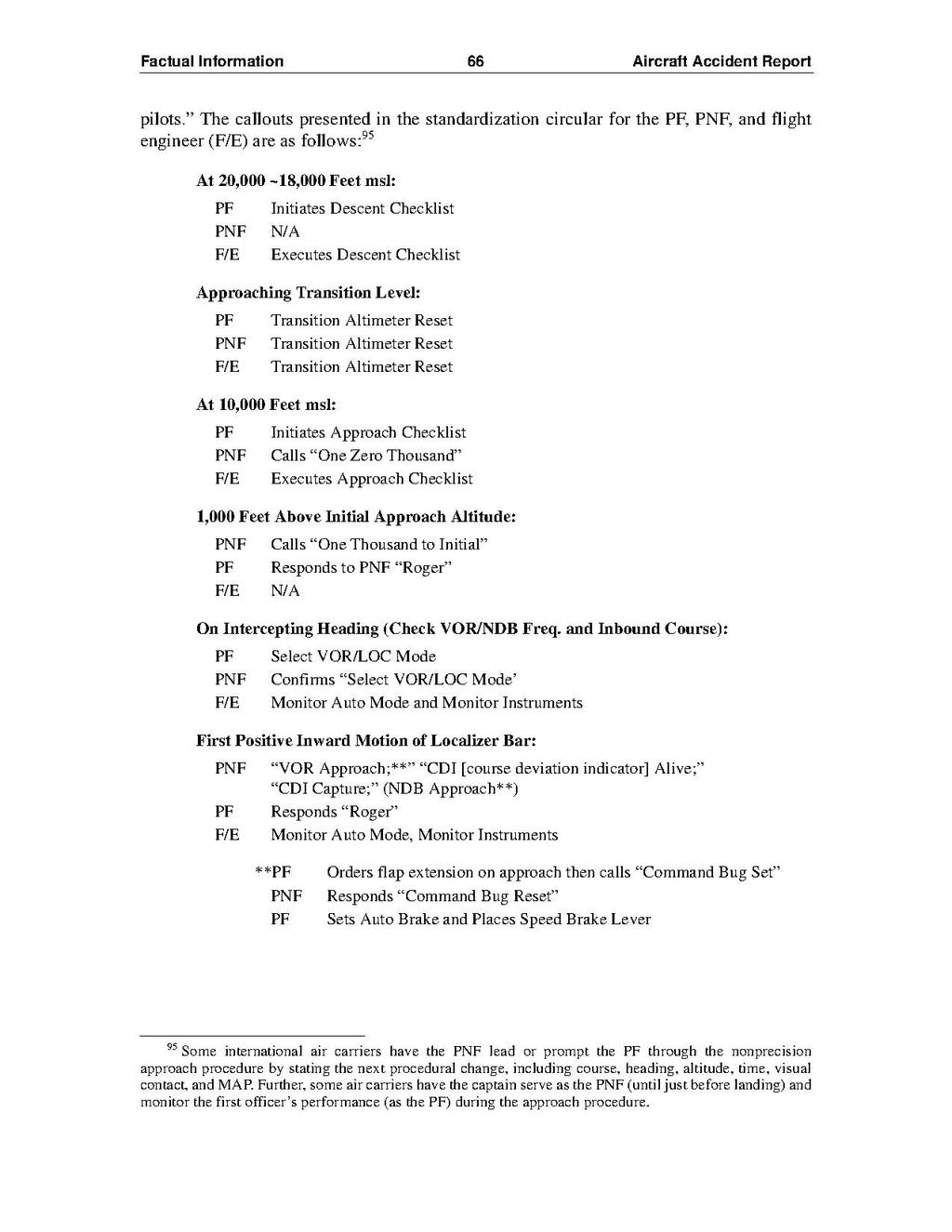Factual Information
66
Aircraft Accident Report
pilots." The callouts presented in the standardization circular for the PF, PNF, and flight engineer (F/E) are as follows:[1]
| At 20,000 ~18,000 Feet msl: | |
| PF | Initiates Descent Checklist |
| PNF | N/A |
| F/E | Executes Descent Checklist |
| Approaching Transition Level: | |
| PF | Transition Altimeter Reset |
| PNF | Transition Altimeter Reset |
| F/E | Transition Altimeter Reset |
| At 10,000 Feet msl: | |
| PF | Initiates Approach Checklist |
| PNF | Calls "One Zero Thousand" |
| F/E | Executes Approach Checklist |
| 1,000 Feet Above Initial Approach Altitude: | |
| PNF | Calls "One Thousand to Initial" |
| PF | Responds to PNF "Roger" |
| F/E | N/A |
| On Intercepting Heading (Check VOR/NDB Freq. and Inbound Course): | |
| PF | Select VOR/LOC Mode |
| PNF | Confirms "Select VOR/LOC Mode' |
| F/E | Monitor Auto Mode and Monitor Instruments |
| First Positive Inward Motion of Localizer Bar: | |
| PNF | "VOR Approach;**" "CDI [course deviation indicator] Alive;" |
| PF | "CDI Capture;" (NDB Approach**) |
| F/E | Responds "Roger" Monitor Auto Mode, Monitor Instruments |
| ** | PF | Orders flap extension on approach then calls "Command Bug Set" |
| PNF | Responds "Command Bug Reset" | |
| PF | Sets Auto Brake and Places Speed Brake Lever |
- ↑ Some international air carriers have the PNF lead or prompt the PF through the nonprecision approach procedure by stating the next procedural change, including course, heading, altitude, time, visual contact, and MAP. Further, some air carriers have the captain serve as the PNF (until just before landing) and monitor the first officer's performance (as the PF) during the approach procedure.
